The concept for the Center for the Study of New Testament Manuscripts began long before it became an official non-profit organization. In my sabbatical at Cambridge University in 1995 I logged many happy weeks at the University Library examining New Testament manuscripts. Peter Head of Tyndale House, Cambridge, and I even spent a day poring over Codex Cantabrigiensis, a fifth-century codex that had been donated to the University in 1581 by Theodore Beza. Digital photography was starting to have an impact in the late 90s. Dr. Hall Harris (CSNTM board member) urged me to start my own institute for examining and photographing NT manuscripts. The need was great: only microfilms were available for most NT manuscripts, and the quality was abysmal. Frequently, the text was illegible on these microfilms, and virtually all marginal notes by the scribes were way too blurry to read. Our knowledge, therefore, of the NT manuscripts was, in each instance, almost always incomplete. Once 4 megapixel digital cameras were produced, the time was right to found a new institute. Digital photography ushered in a new era of textual study: for the first time, these manuscripts would be easily accessible and read with great clarity.
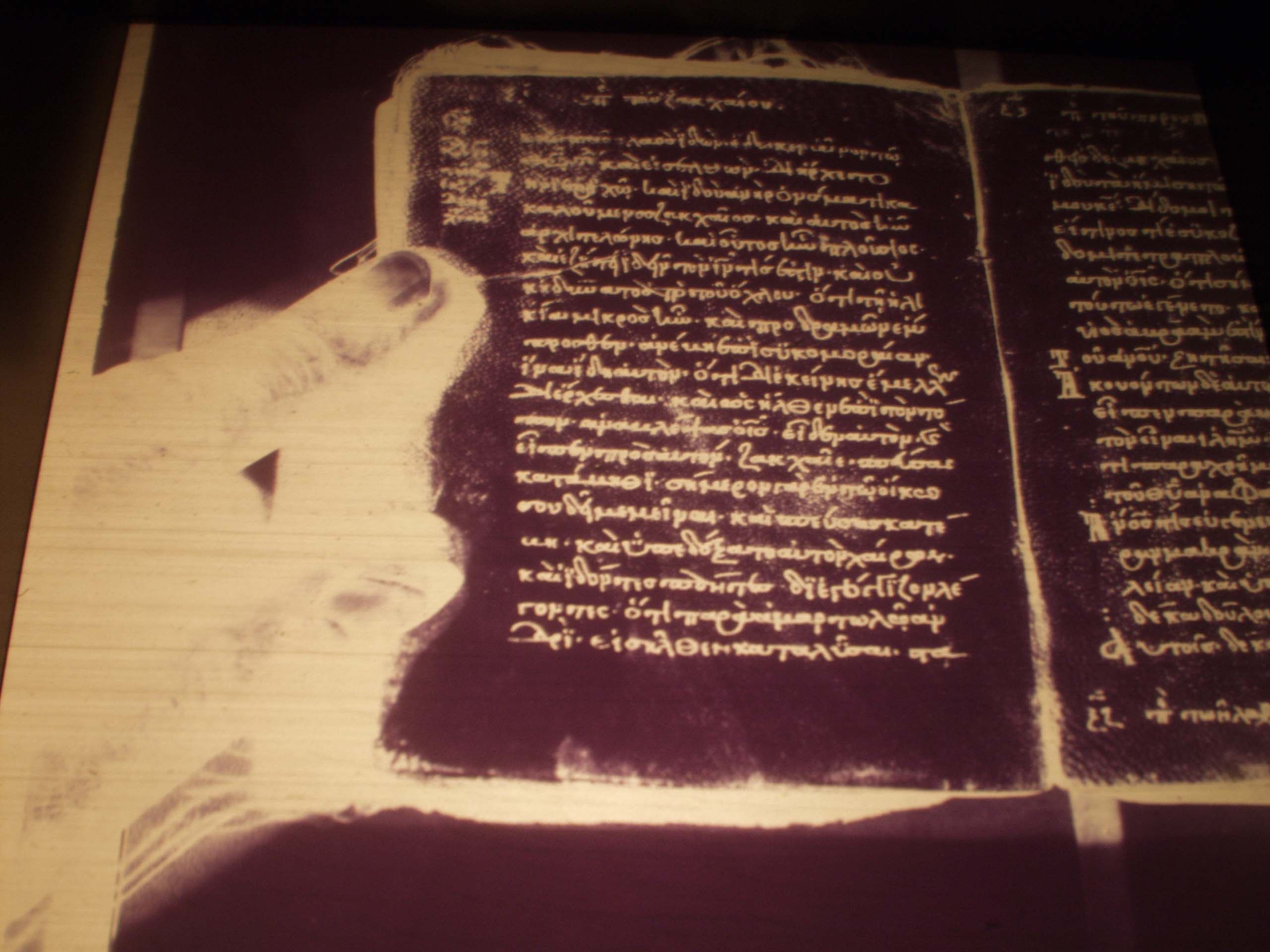
Microfilm Image of NT Manuscript
CSNTM was granted 501(c)3 status on September 13, 2002 by the IRS.
Our inaugural expedition was to St. Catherine’s Monastery, Mt. Sinai, Egypt in September 2002. In our week there, we examined some of the ‘New Finds’ manuscripts that had been discovered in 1975. In the process of examination, we discovered two more previously unknown manuscripts: an ancient Greek Old Testament palimpsest (a manuscript that had been scraped over and reused) of the major prophets, in majuscule script; and the Protevangelium of James, an apocryphal book of which very few copies still exist (this was one of the earliest ones).
Later in the same month, my wife and I moved to Münster, Germany where we spent a sabbatical year. Because CSNTM was a brand new institute with virtually no funding, we needed a major gift for the sabbatical year to be as effective as possible. Our prayers were answered: Just such a gift from a small church in Minnesota arrived that summer, allowing me to travel throughout Europe in search of manuscripts. Several more discoveries were made in 2002–03. And our first digitizing project was at the Institute for New Testament Research (INTF) in Münster. With one 4 MP and one 5 MP camera (the cost for each of these state-of-the-art cameras was in the four digits!), an assistant and I spent several weeks digitizing the 22 manuscripts in Münster’s collection. It took 90 seconds to process a single picture! The quality was not very good compared to today’s standards, but it was far better than microfilm.
In the early years, CSNTM was essentially a summer project. We usually raised enough funds for a two- or three-week expedition each summer. The physical location of the Center was my study, closet, garage—and sometimes living room! As word of our mission spread, the funds began to pour in. In 2004 we digitized 30 manuscripts at the Ecumenical Patriarchate of Constantinople, including an early majuscule palimpsest of Mark’s Gospel that we discovered.
The Center grew, our expedition season expanded, and the quality of the cameras improved. We procured subleased office space in 2008, and the staff increased to two full-timers and one part-time employee.
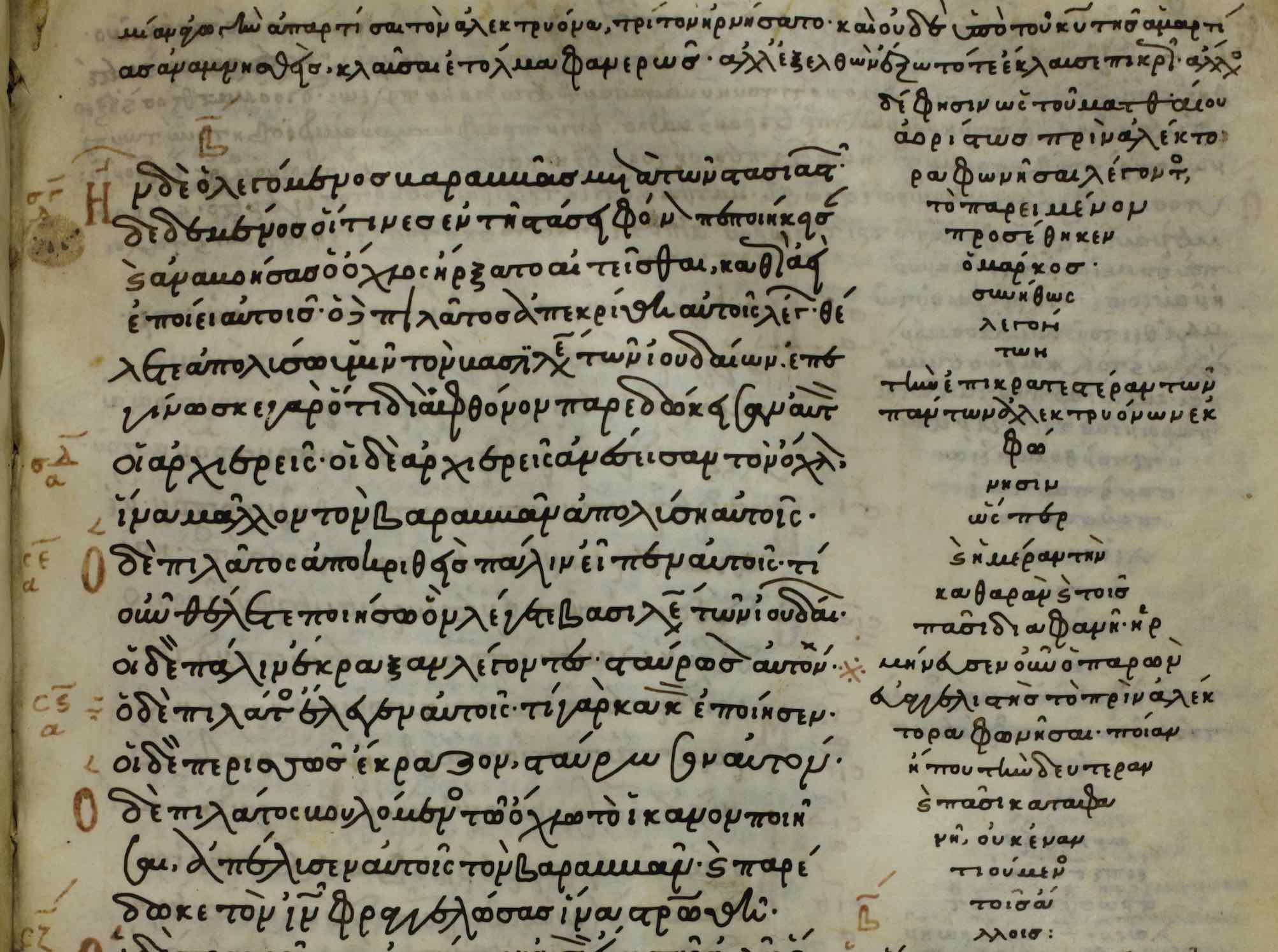
Codex 800 (National Library of Greece)
During these years, we continued to discover more manuscripts and improve our photographic protocols. In 2007 our visit to the National Archive in Tirana, Albania revealed dozens of NT manuscripts that the scholarly world was unaware of. The news of these discoveries was reported in over 100 international newspapers.
2008–09 was another sabbatical year for me. I spent it digitizing manuscripts on three continents. The CSNTM team photographed manuscripts in Albania, Romania, Cambridge University, Arundel Castle, Glasgow University, St. Andrews University, University of Michigan, Australia (Sydney and Melbourne), New Zealand (Auckland), the Bavarian State Library in Munich, several sites in Greece, and many other locations.
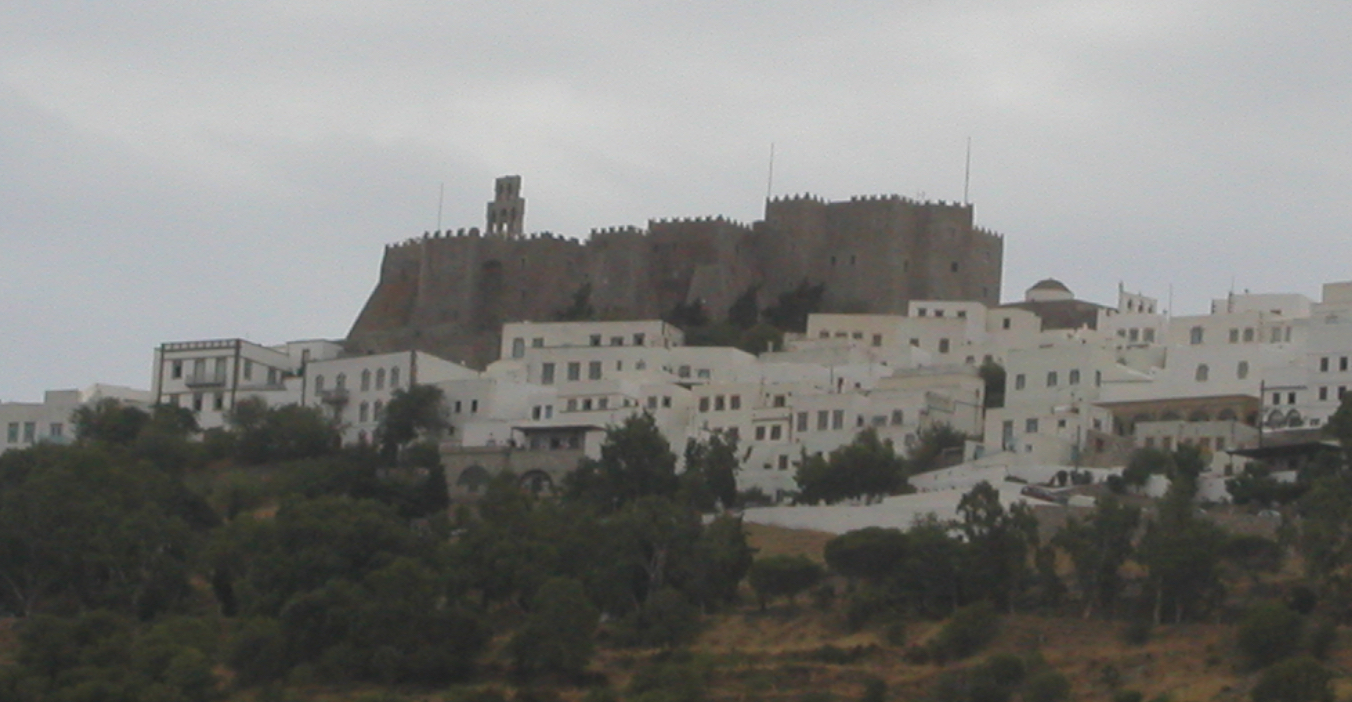
Monastery of St. John the Theologian, Patmos
By this time, CSNTM had earned an international reputation. The quality of our images, the free access to these images, and the many discoveries were helping biblical scholars all over the globe in the task of reconstructing the exact wording of the original text—all at the click of a mouse.
In 2013, through the advocacy of Dr. Larry Hurtado of Edinburgh University, CSNTM was granted permission to photograph some of the oldest and most important papyri of the NT, housed at the Chester Beatty Library in Dublin. Portions of one of these manuscripts, which we digitized the following year, were at the University of Michigan. Eighty years ago, photographs of these unspeakably significant papyri were published. Technology has improved a bit since then; the crisp clarity of CSNTM’s images has revealed many more details. Two PhD dissertations on these papyri have been done/are being done based on our images. All this will help scholars discern the early transmission of the NT text and assist them in recovering the wording of the originals.
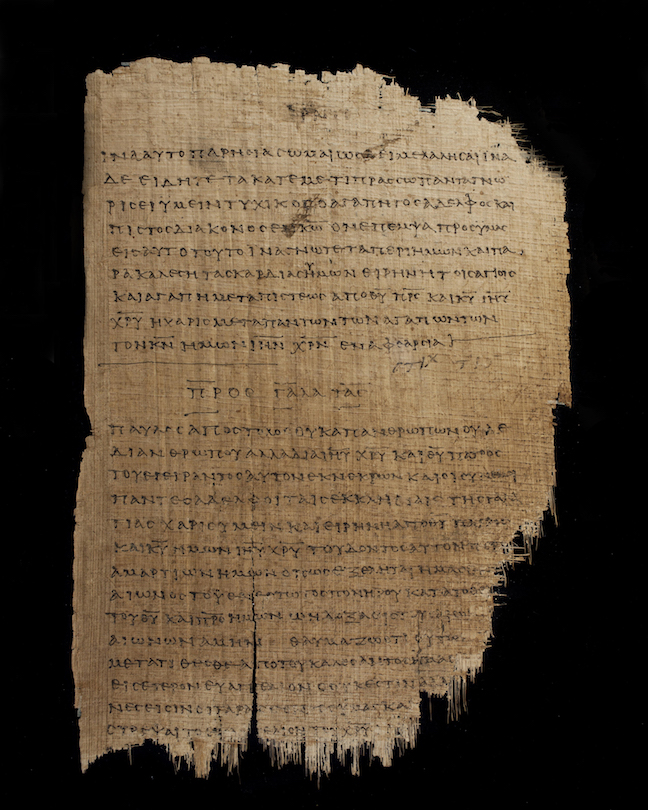
A Page from P46 (University of Michigan)
Speaking of doctoral students, every year CSNTM staff train interns for scholarly work in the New Testament. Many of our interns have gone on to prestigious universities to earn advanced degrees—Cambridge, Oxford, Edinburgh, Yale, Brown, Princeton Seminary, St. Andrews, Wheaton College, Dallas Seminary, University of Dallas, Baylor University, and many other schools. And several of them are now teaching, bringing solid, biblical scholarship to the classroom. Like CSNTM’s digital images, these scholars will have an impact for generations to come.
The next year was no less momentous. CSNTM received a contract to digitize the entire collection of Greek NT manuscripts at the National Library of Greece in Athens. We labored for the next two years on the project. Forty-four people were rigorously trained for precision digitizing. During this time we purchased the long-anticipated Canon 50 MP cameras—ten times better than our original cameras. Over 300 manuscripts were photographed producing 45 terabytes of images (150,000 images). Thanks especially must go to Rob Marcello, who is in charge of our expeditions and who planned this two-year enterprise down to the smallest details. The post-production work is still ongoing.
Our tiny institute—with only seven employees—has a reputation that belies its size. The staff includes:
Rob Marcello, Director of Operations and Research
Christina Nations, Development Manager
Stratton Ladewig, Project Manager
Andrew Bobo, Research Coordinator
Mark Arvé, Finance Coordinator
Andy Patton, Development Coordinator
Dan Wallace, Executive Director.
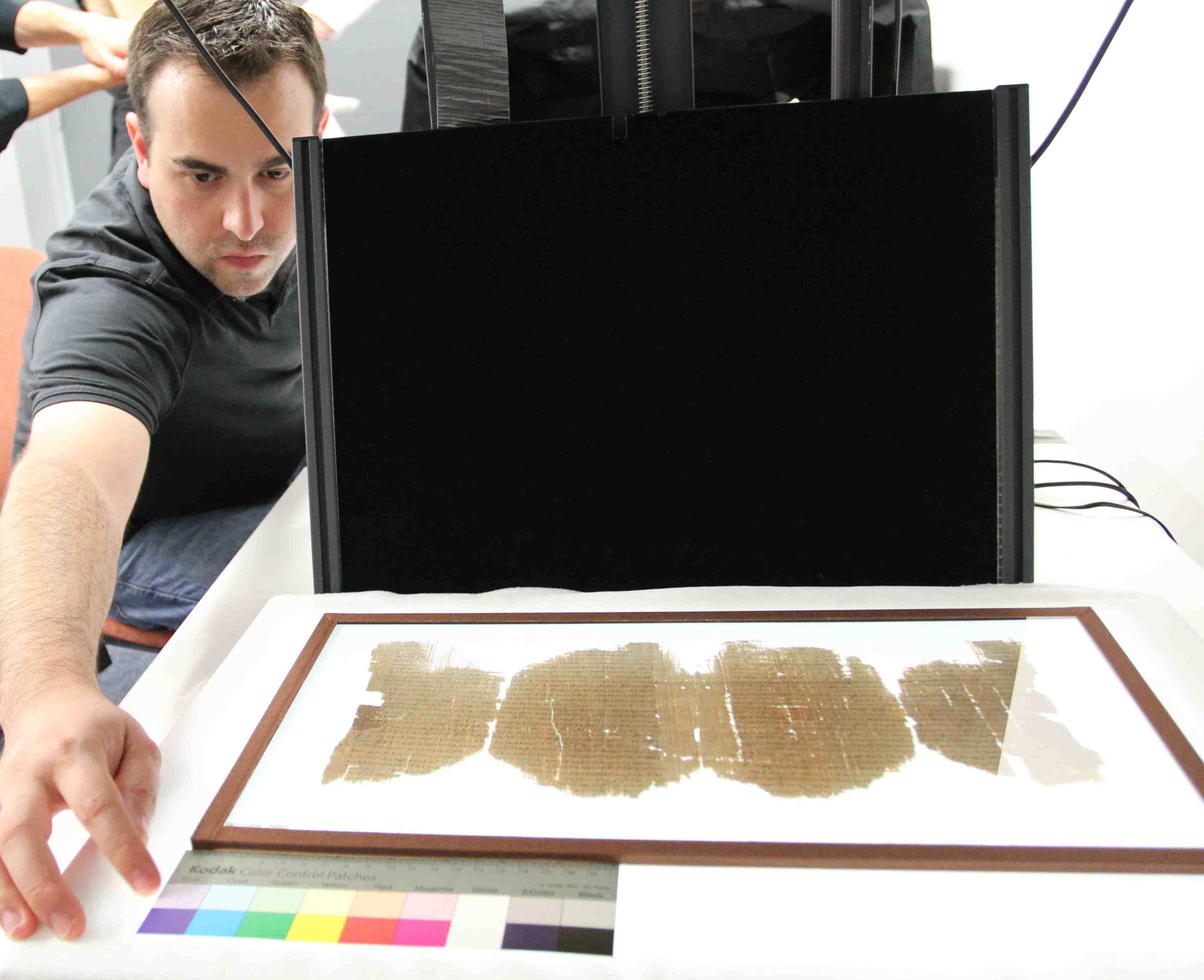
Rob Marcello in Dublin
As of last month, CSNTM now has its own leased office—more than 2000 square feet including offices, a dedicated digitizing room, equipment room, library, and conference room.
In CSNTM’s first 15 years, we have worked at more than forty locations throughout the world, digitizing more than half a million pages of the Greek NT and discovering upwards of 90 manuscripts. As we look to the future, our sights are set on libraries in Greece, Italy, Eastern Europe, former Soviet bloc countries, and the Middle East. We will soon add Multi-Spectral Imaging to our digitizing equipment, enabling us to read erased manuscripts—manuscripts whose text has not been seen for centuries. Donations are both welcome and necessary for this work. Not only are CSNTM’s images helping biblical researchers, art historians, and Greek scholars, but they are also digitally preserving these amazing artifacts, freezing them in time before the decay of the ages has its full sway. And, as always, our commitment is to make our images free for all, free for all time.
Daniel B. Wallace
Executive Director
CSNTM
